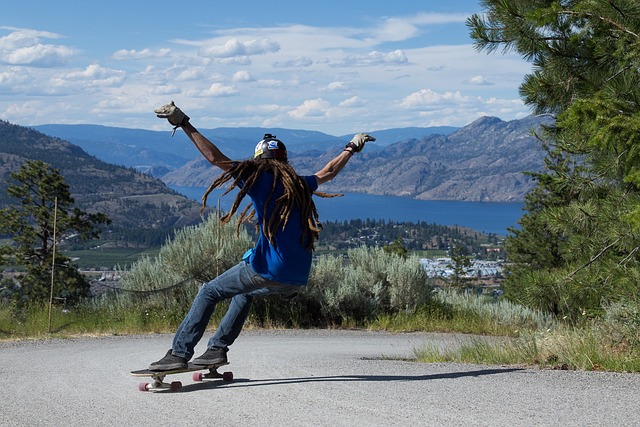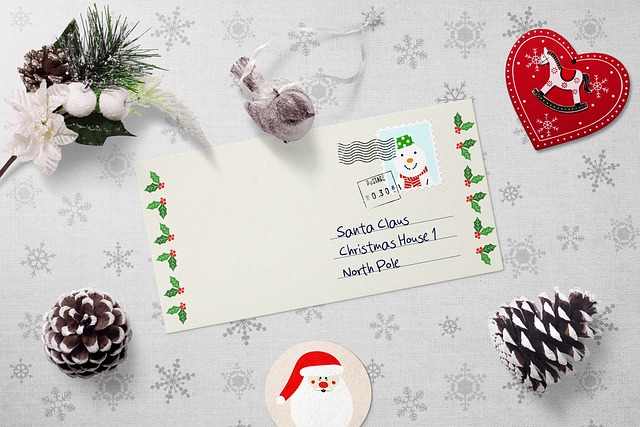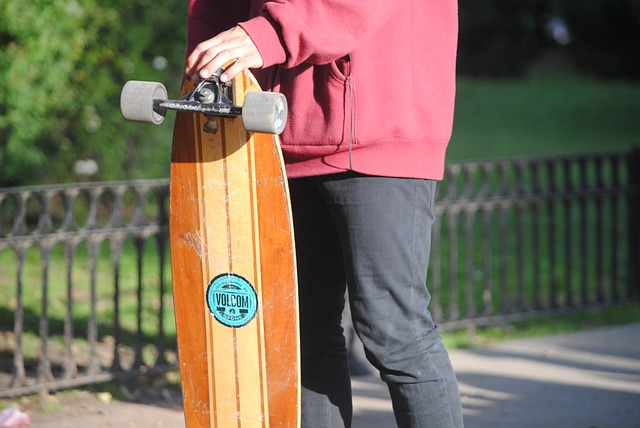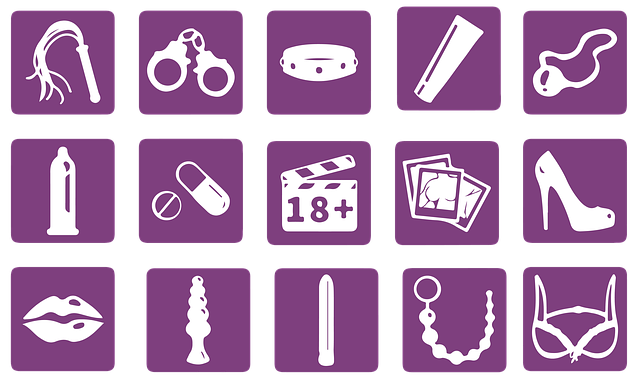Longboarding can be an incredibly rewarding and exciting hobby for beginners. To start off on the right foot, it's essential to select a longboard that suits your size and skill level, with a deck length between 38 to 44 inches, a width that provides ample foot space, and safety features such as a tail brake. Beginners should focus on mastering the basics, including proper stance, balance training, and understanding how to control the longboard through gentle pushing, gliding, and learning to turn by shifting your weight. Safety gear like a helmet, knee pads, elbow pads, skateboarding gloves, and wrist guards are non-negotiable to prevent injuries. As you progress, engaging with the longboarding community, both locally and online, can provide valuable advice, support, and opportunities to participate in events and workshops that will accelerate your learning and enjoyment of the sport. Whether you're looking for transportation or a new adventure, a longboard for beginners is your gateway to the world of longboarding.
Embark on an exhilarating journey into the world of longboarding with our comprehensive guide tailored for beginners. This article will illuminate the nuances of longboarding, highlighting why it’s an excellent choice for newcomers over traditional skateboards. We’ll explore vital characteristics to consider in a longboard suited for novices, recommend top-rated models, and provide insights on selecting the ideal size and shape for your first deck. Safety is paramount, so we’ll cover the necessary gear to ensure your well-being as you navigate the learning curve. Master the foundational skills from stance and balance to footwork, and learn practical tips to swiftly advance your longboarding prowess. Plus, discover how to tap into a supportive community of fellow longboarders to enhance your experience and continue your progression. Whether you’re drawn to the sport for leisure, commuting, or the thrill of downhill racing, this guide is your gateway to the longboarding lifestyle.
Understanding Longboarding: A Beginner's Guide

Embarking on the longboarding journey can be both exhilarating and daunting for novices. A longboard, distinguished by its larger wheel size compared to a regular skateboard, offers a unique experience that combines the thrill of downhill riding with the stability of a longer deck. For those new to this sport, selecting the right longboard for beginners is paramount. It’s advisable to choose a board designed for stability and ease of use, typically characterized by a wider deck, softer wheels, and a more relaxed wheelbase. These features help in navigating various terrains with greater confidence and control.
Once equipped with the appropriate gear, beginners should familiarize themselves with the basics of balance and foot placement. Starting with gentle pushes, novices can practice maneuvers such as turning, braking, and carving on flat ground. These fundamental skills are the cornerstone of mastering longboarding techniques like cruising, freeriding, or even skateboarding’s more daring disciplines as confidence grows. To enhance the learning experience, consider seeking out resources such as instructional videos, online forums, and local communities or classes that cater specifically to beginners in longboarding. These resources can provide valuable insights into the nuances of longboarding, ensuring a smooth transition from a beginner to an adept longboarder.
The Advantages of Starting with a Longboard over a Traditional Skateboard

Opting for a longboard as a beginner offers distinct advantages over traditional skateboards, making it an excellent choice for newcomers to the world of board sports. Longboards are designed with stability and ease of use in mind, which means they provide a more forgiving ride that’s less prone to wobble or instability at lower speeds. This is particularly beneficial for novices who are still developing their balance and confidence. The larger wheel size and broader trucks on most longboards allow for a smoother ride over various terrains, from flat streets to uneven sidewalks. This versatility enables beginners to explore different riding styles such as carving or cruising without the risks associated with the more technical maneuvers required on a traditional skateboard. Additionally, longboards often come with simpler trucks and larger wheels that are easier to maintain speed and directional control, reducing the steep learning curve typically experienced by those new to skateboarding. Choosing a longboard for beginners can set riders on a path to mastering the sport with greater comfort and safety, making it an ideal entry point into the exciting world of longboarding.
Key Features to Look for in a Longboard for Beginners

When selecting a longboard tailored for beginners, it’s crucial to consider several key features that will enhance your learning experience and promote progression. The deck size and shape are particularly important; opt for a longer deck with a slight concave to provide stability during turns and maneuvers. A larger deck also offers more foot space, which is essential for new riders who are still developing their balance and stance. Additionally, the wheel size and durometer play significant roles in the ride quality. Larger wheels, typically between 60mm and 75mm, combined with a softer durometer, usually around 78a to 83a, will offer a smooth ride over various terrains while absorbing most of the roughness from the road.
Another pivotal feature is the truck’s responsiveness and rigidity. A balanced combination of both—typically achieved through a medium truck with a bushing setup that can be adjusted—allows for easier turns and better control as you get accustomed to the longboarding feel. Bearings and grip tape are also not to be overlooked; high-quality ABEC-7 or above bearings ensure smooth rolling, while premium grip tape provides maximum traction and helps prevent slips and falls when learning new skills. Lastly, consider a longboard with a mild flex for added comfort and a more forgiving ride, which is especially beneficial as you learn to carve and slide. By focusing on these aspects, beginners can select a longboard that will offer a safe, enjoyable, and supportive introduction to the world of longboarding.
Top-Rated Longboards for Newcomers to the Sport

When embarking on the exciting journey of longboarding, selecting a longboard that is well-suited for beginners is crucial to an enjoyable and safe experience. The best longboards for novices are those that offer a balance between stability, maneuverability, and durability. They should be designed with a comfortable deck size, typically ranging from 38 to 44 inches, providing ample space for foot placement and a smooth ride. The wheel size, generally around 65mm to 70mm, is ideal for both city commuting and cruising on campus or park paths.
Furthermore, beginners should look for longboards with a robust trucks system, usually between 270mm and 320mm in height, which offers the right amount of leverage without being too intimidating for those new to the sport. Bushing selection and baseplate design are also important considerations as they contribute to the board’s turning ability. Top-rated longboards for beginners often come with pre-configured bushings that offer a balanced ride, but it’s always a good idea to explore different bushing combinations to tailor the ride to your preferences. High-quality bearings are another key aspect to ensure a smooth and responsive ride. Longboards that cater to newcomers typically include ABEC-7 or higher precision bearings, which facilitate faster rolling and less friction.
As you explore longboarding, the options for beginners continue to expand, with many brands offering models specifically designed for those taking their first steps into the sport. These longboards are not only great for learning the basics but also robust enough to withstand the wear and tear of a beginner’s learning curve. Whether you’re looking to replace your old skateboard or trying longboarding for the first time, there’s a perfect longboard for beginners out there that will cater to your needs and help you progress in this exhilarating sport.
How to Choose the Right Size and Shape for Your First Longboard

When embarking on the exciting journey of longboarding, selecting the right size and shape for your first board is a pivotal decision that can significantly influence your experience. For beginners, it’s crucial to find a longboard that offers both stability and ease of use. A good-sized longboard for novices typically ranges from 38 to 44 inches in length, providing a balance between maneuverability and stability. Shorter boards, around 32 to 38 inches, are great for city commuting and tight spaces, while longer boards, over 44 inches, offer increased stability for higher speeds and downhill riding.
In terms of shape, consider the deck’s width and concave. A wider deck offers more foot space and is generally more stable, which is ideal for beginners. The concave of the deck should be comfortable yet hold your feet securely during turns and tricks. As for wheelbase, a longer wheelbase will offer more stability, while a shorter one allows for tighter turns, making it versatile depending on your intended use. Drop-through mounting is often recommended for beginners as it lowers the board’s center of gravity, making it easier to push and control, especially when learning to balance and ride. By carefully considering the size and shape of your longboard, you set a solid foundation for your skills to grow and enjoy the endless possibilities that longboarding offers.
Essential Safety Gear for Longboarding Rookies

When embarking on the exciting journey of longboarding, safety should be your top priority. For novices, selecting the right protective gear can significantly reduce the risk of injury and enhance your experience. A high-quality helmet is non-negotiable; it should fit snugly, offering full head protection. Knee and elbow pads are also crucial as they provide cushioning upon impact, safeguarding against falls and abrasions. Gloves designed for skateboarding can prevent road rash and bruises on your hands. Additionally, sturdy wrist guards offer support to your wrists, which are vulnerable during a fall. Reflective gear or clothing is beneficial for visibility, especially when riding in low-light conditions or during early mornings or late evenings. Investing in a longboard tail brake can also be advantageous, as it allows for controlled stops and better maneuverability, which is essential for beginners learning to navigate their new longboard. Remember, the best longboard for beginners not only offers stability but also comes with the necessary safety features and gear to ensure a safe and enjoyable experience on the road or in the skate park. Always prioritize safety as you develop your skills and confidence on your longboard.
Mastering the Basics: Stance, Balance, and Footwork for Beginners

When starting out with a longboard, mastering the basics is paramount to building confidence and skill on your new board. To begin with, adopting the correct stance is essential for stability and control. Stand with your feet parallel to each other and shoulder-width apart; this position allows for even weight distribution and better balance. Your front foot should be slightly ahead, near the nose of the longboard, providing steering control through subtle body shifts. The back foot’s placement typically rests behind the trucks, ready to adjust your ride based on the terrain ahead.
Balance, in conjunction with stance, is a foundational skill that can be honed over time through regular practice. Begin by simply pushing and gliding, focusing on keeping your center of gravity low and centered above the board. Practice standing still to get comfortable; once you’re steady, start moving at a slow pace to test your balance while in motion. Footwork is the next element to refine, as it directly influences your turning and maneuvering abilities. Learning the basic steps, such as lifting and placing your feet down with precision, will help you make smooth, controlled turns. Engage your core muscles to maintain stability during these movements, and gradually increase your speed to become more adept at handling the longboard’s responsiveness. By focusing on these elements—stance, balance, and footwork—beginners can effectively lay the groundwork for a rewarding experience with their new longboard, paving the way for advanced techniques and longer, more adventurous rides.
Practical Tips for Improving Your Longboarding Skills Quickly

For those embarking on the exhilarating journey of longboarding, mastery comes with time and practice. To enhance your skills rapidly as a beginner, it’s crucial to focus on foundational techniques that will serve as building blocks for more advanced maneuvers. Start by choosing a longboard model suited for beginners, one that offers stability and ease of handling. Familiarize yourself with the various parts of your longboard, including the trucks, wheels, and bearings, to understand how each component contributes to your ride.
Once comfortable with the basics, progress to learning how to balance effectively. This can be achieved through static balance exercises, where you practice maintaining your center of gravity over the board without moving. Dynamic balance is equally important; this involves gliding smoothly over different terrains and obstacles. Practice skating on flat ground, using gentle turns to transition from heel to toe, which will improve your turning precision and control. Incorporate gradual inclines into your routine to enhance your confidence and ability to handle slopes safely. Additionally, engage in exercises that enhance your lower body strength, like jumping jacks or lunges, to build the leg muscles used for propulsion and stability. By consistently challenging yourself with new techniques and maintaining a focused practice regimen, you’ll notice significant improvements in your longboarding skills over time. Remember to prioritize safety gear, such as helmets and knee pads, and always skate within your limits to avoid injuries. With dedication and the right approach, progress in longboarding can be both rapid and rewarding for beginners.
Joining the Community: How to Connect with Other Longboarders and Find Support

Embarking on the journey of longboarding can be both exhilarating and intimidating for beginners. One of the most effective ways to enhance your experience and progress is by connecting with fellow longboard enthusiasts. The longboarding community is a rich resource for support, advice, and camaraderie, offering opportunities to learn from experienced riders. To integrate into this community, start by seeking out local clubs or groups dedicated to longboarding. Social media platforms like Reddit, Facebook, or Instagram have numerous groups where you can introduce yourself, ask questions, share experiences, and find events or meetups in your area. Engaging with these communities not only provides practical tips for riding but also fosters a sense of belonging and motivation. Additionally, attending longboarding events, workshops, or demos can be a fantastic way to connect with other riders and learn from their experiences firsthand. Remember, the longboarding community is often welcoming to beginners, so don’t hesitate to reach out and make new friends who share your passion for the sport. As you become more involved, you’ll discover that the longboard for beginners isn’t just a piece of equipment but also a gateway to new friendships and adventures on wheels.
